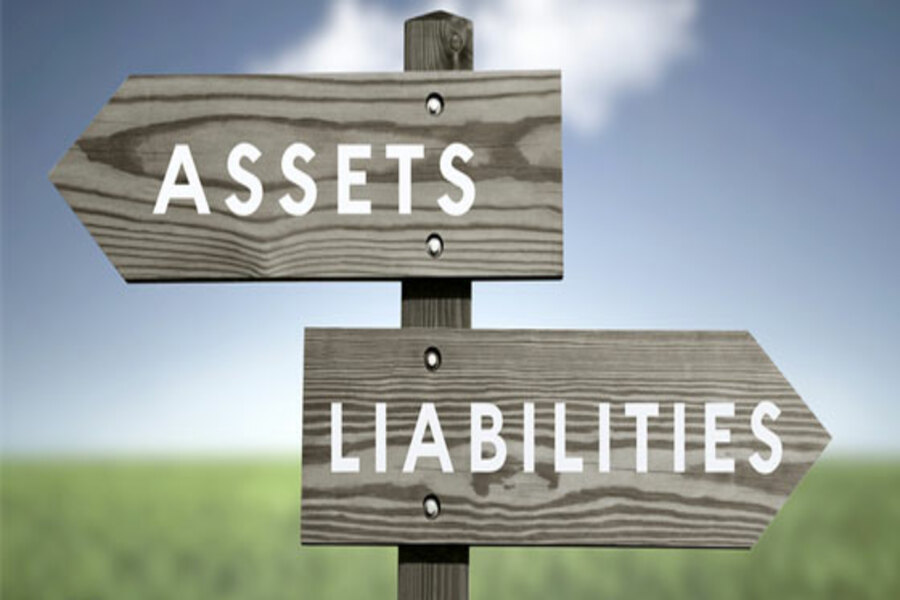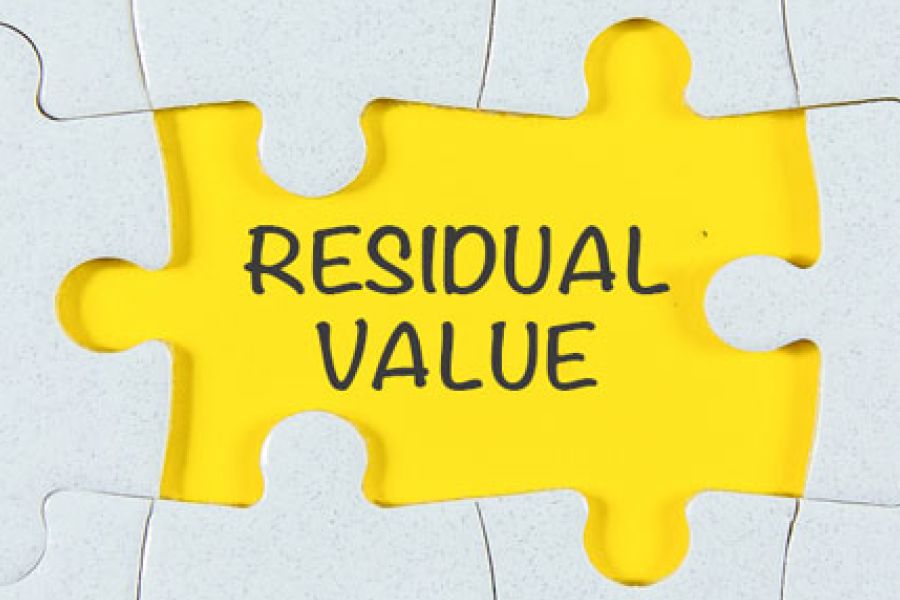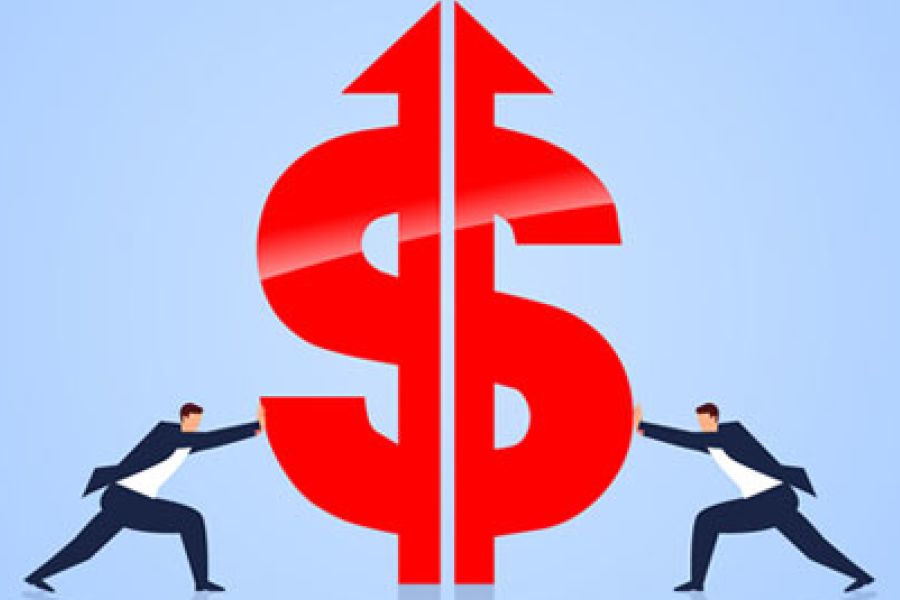The balance sheet — which shows a company’s assets and liabilities — is a logical starting point for valuing certain types of businesses. The cost (or asset) approach specifically focuses on this part of a company’s financial statements. Here’s an overview to help you understand this valuation technique. How does it work? When valuation professionals apply the cost approach, they convert the book values reported on the balance sheet to their respective fair market values. There are three key reasons that book value may not reflect fair market value to a hypothetical buyer or seller: 1. Use of historic cost. Under U.S. Generally Accepted Accounting Principles (GAAP), assets are recorded at historic cost. Over time, historic cost may understate market value for appreciable assets, such as marketable securities...

When valuing a business using the discounted cash flow method, residual (or terminal) value is a key component. The International Valuation Glossary — Business Valuation defines residual value as “the value as of the end of the discrete projection period in a discounted future earnings model.” Business valuation experts typically consider the capitalization of earnings method and the market approach when estimating residual value. Either (or both) may be appropriate, depending on the nature of the business, purpose of the valuation, reliability of the company’s financial projections and availability of market data. Capitalizing earnings The capitalization of earnings method is based on the assumption that cash flow will stabilize in the final year of the projection period. However, this is also the time period that’s subject to the...
As posted to the Munro Live YouTube Channel on 7/5/2022 (Run Time 17 min, 23 sec) The team at Munro & Associates just dropped the structural battery pack (with 4680 cells) out of their brand-new Texas-made Tesla Model Y. What they found is something that they've never seen . . . ever. The seats, console, carpet, etc. are mounted to the structural battery pack which can be removed in one assembly from the bottom of the car. Just the improvement to the ease of putting together the inside of the car on the assembly line when you're coming up from below because there is no floor is phenomenal. But there's more. (This is Blog Post #1231) Sandy Munro is an automotive engineer who specializes in machine tools and manufacturing....
As posted to CBT News on 6/14/22 (Click Image to View Clip - Run Time: 18 min, 46 sec) Automakers have been making some unprecedented moves with regards to electric vehicles . . . so much so that many franchise dealers are becoming concerned about the future of their businesses. In this clip, automotive attorney Len Bellavia sits down virtually with Jim Fitzpatrick on CBT News' "Inside Automotive" to discuss recent factory announcements as well as his perspective on the future of the franchised dealer network model. With OEMs implying that it is their wish to implement a direct-to-consumer sales model in some form or another, Bellavia states that franchise dealers are wondering if action needs to be taken. From his perspective, the broad dealer consensus seems to be...
As posted to the Naomi Brockwell YouTube Channel on 5/21/22 (Run Time: 9 min, 17 sec) In this informative video, Naomi Brockwell provides a primer on how tracking links work, and offers suggestions for identifying/bypassing them, and using a browser that does the best job at circumventing them. The author's outline of the clip on YouTube is as follows: Tracking links are a way for sites to track you across the web. They usually look like super long strings of random numbers attached to the end of normal URLs, and companies use them to build up dossiers on people based on their browsing habits. And they can reveal VERY sensitive information about you! What is Naomi's recommendation for an optimal privacy preserving browser? Brave. (This is Blog Post #1229) Naomi Brockwell is...
On 6/1/22, the IRS made available an update to the "Cost Segregation Audit Techniques Guide" (Publication 5653). Originally issued in 2004, the purpose of the Audit Techniques Guide (ATG) was to offer guidance to IRS auditors auditing cost segregation studies. Because the ATG is an interpretation of the law, as opposed to the law itself, it cannot be cited as precedent. It does however provide an inside look at how the IRS views this subject. The IRS maintains a library of Audit Techniques Guides (ATGs) intended to help IRS examiners during audits by providing insight into issues and accounting methods unique to specific industries. While ATGs are designed to provide guidance for IRS employees, they’re also useful to small business owners and tax professionals who prepare...
In mergers and acquisitions (M&As), there are some buyers who are willing to pay a premium above the fair market value of the business on a controlling basis. This premium typically is the result of cost-saving or revenue-building synergies that a specific buyer can potentially gain by acquiring the seller’s business. When selling a business, it makes sense to find a buyer who’s willing to pay the highest possible price. Here’s some guidance to help identify synergistic buyers and establish a reasonable asking price. What is synergistic value? According to the International Valuation Glossary — Business Valuation, synergistic value is “the result of a combination of two or more assets or interests where the combined value is more than the sum of the separate values.” This often results...
Valuing a private business is a complex endeavor. But, when all is said and done, valuation analyses boil down to three general approaches. 1. Market approach Under this approach, valuators derive pricing multiples from public or private comparable transactions. These pricing multiples are then applied to the subject company to derive its value. For example, an expert might calculate a median price-to-earnings multiple of 4.5 based on a sample of six comparable transactions. Then the valuator would multiply the subject company’s earnings by 4.5 to arrive at its value. The expert also must consider whether adjustments are warranted to account for the differences between the subject company and comparable firms. Two popular methods fall under the market approach. First, the guideline public company method uses the prices paid for...
Preventing, detecting, and investigating occupational fraud requires a deep understanding of the types of schemes, potential financial losses, emerging threats and risk mitigation strategies. To that end, the Association of Certified Fraud Examiners (ACFE) has published its “Report to the Nations,” the preeminent source for occupational fraud statistics and trends, every two years since 1996. The 2022 ACFE report covers 2,110 occupational fraud cases in 23 industries and in 133 countries. Surveyed organizations have lost more than $3.6 billion to fraud. The report can help your organization understand and mitigate fraud threats. Here are some of the highlights. Three types The ACFE divides occupational fraud schemes into three types: Asset misappropriation. This includes cash theft, fraudulent disbursements, larceny and misuse of inventory and is the most common type of...
As posted to the ARK Invest YouTube Channel on 5/19/22 (Run Time: 16 min, 20 sec) ARK Invest believes that autonomous ride-hailing will reduce the cost of mobility to one-eighth the average cost of ride-hail today, spurring widespread adoption and unleashing unprecedented economic productivity. ARK believes that this could be "one of the most meaningful economic productivity delivering innovations of all time" and the GDP contribution from autonomous ride-hail systems could total around $26 trillion by 2030. Originally aired on 1/25/22, Big Ideas Summit 2022 features in-depth presentations from ARK's research team and seeks to educate attendees on the impact of breakthrough technologies and the investment opportunities they could create. (This is Blog Post #1209) ARK Invest ARK is an investment manager focused solely on disruptive innovation. Rooted in over...










